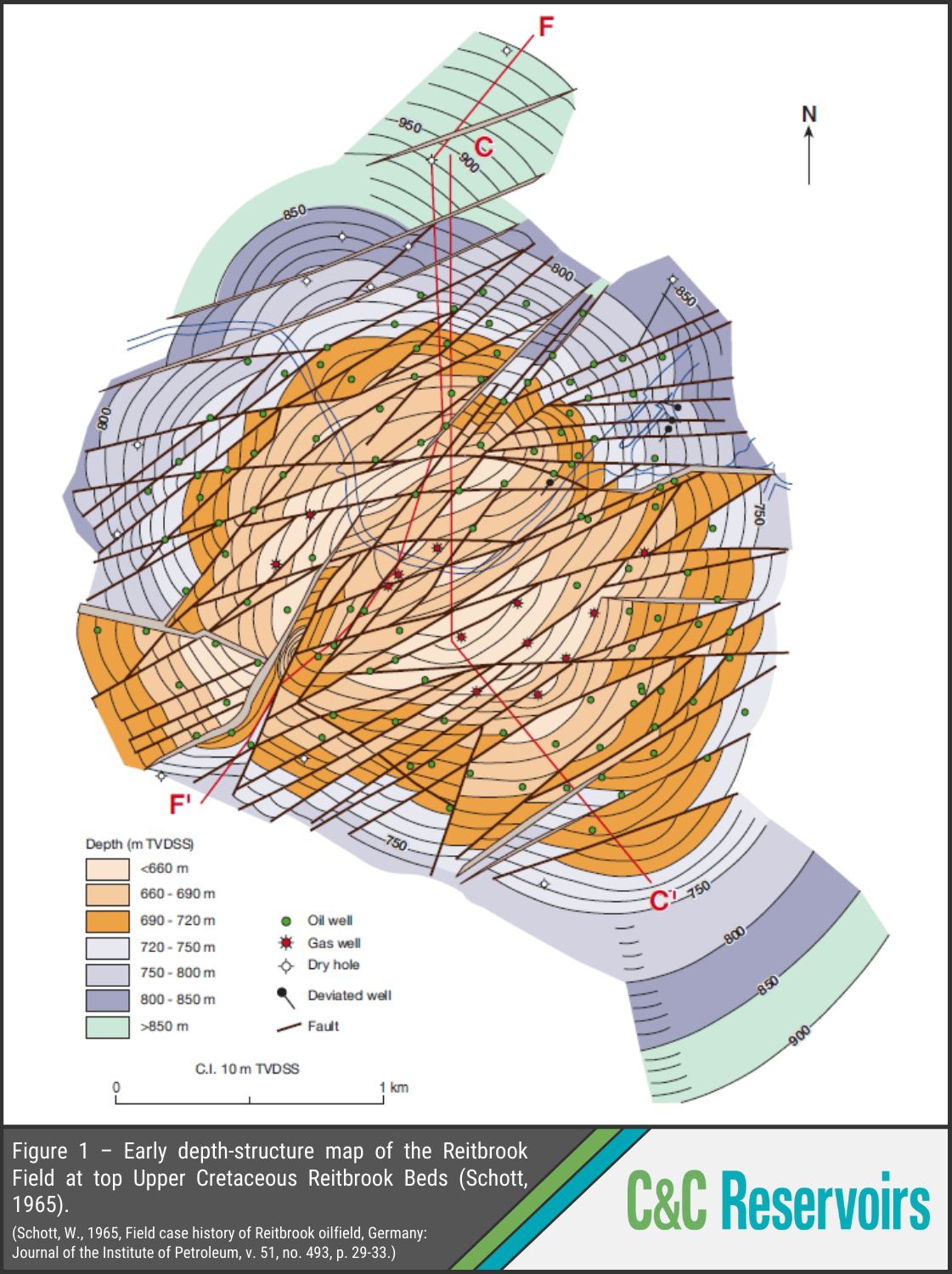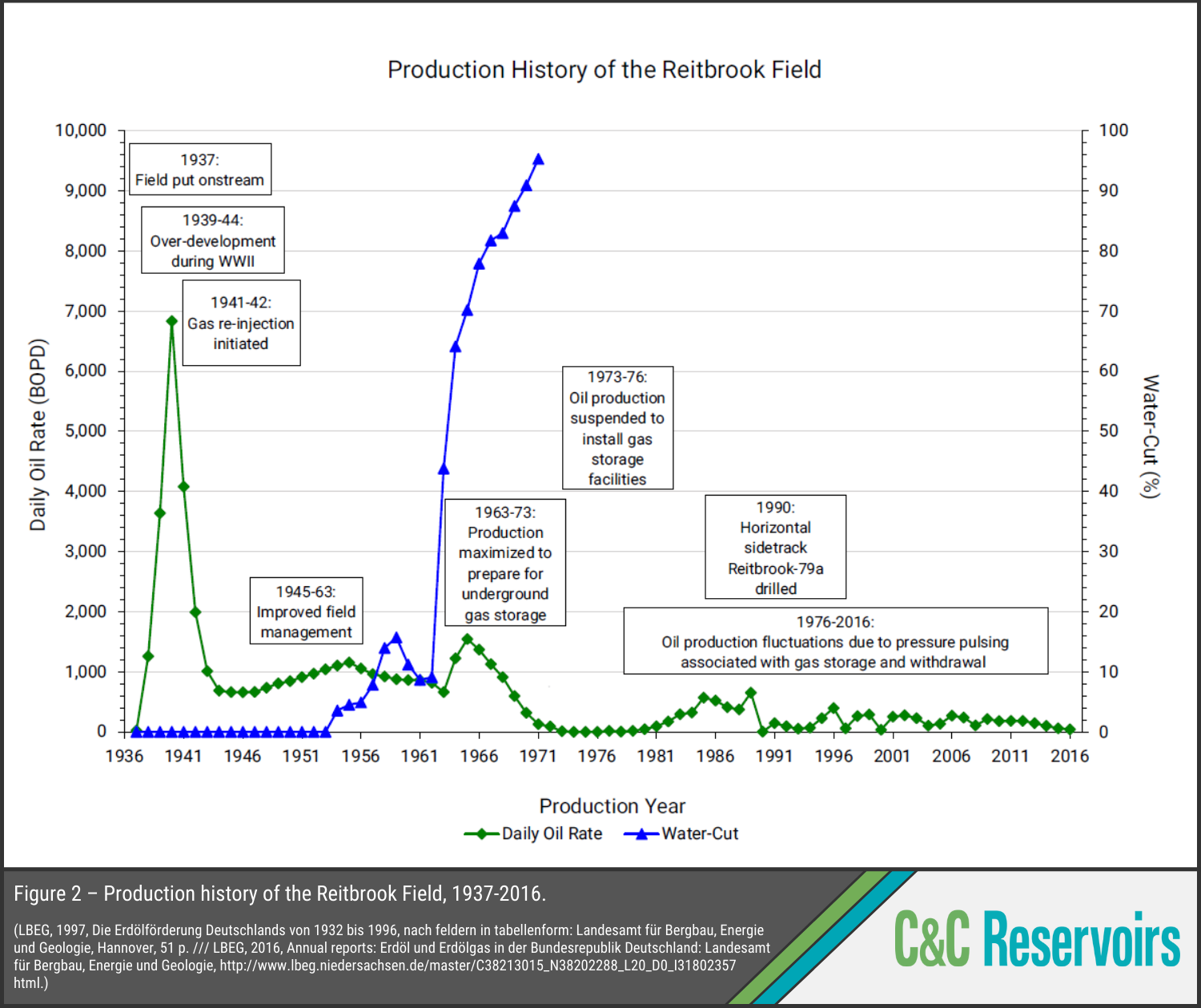The Reitbrook Field
Analogue Spotlight
The Reitbrook Field, discovered in 1910, is a heavily faulted, asymmetrical anticline associated with an Upper Permian Zechstein salt diapir (Fig. 1). Production of the medium-gravity (22 °API), moderately viscous (30 cP) oil began in 1937 and because of high demand during World War II the field was rapidly developed. The rapid production of the field combined with a low permeability reservoir resulted in an EUR of ~19 MMBO, giving a recovery factor of only 8%.
Between July 1937 and end-1947, 225 wells were drilled over an area of 865 ac with an average well spacing of ~10 ac. Owing to the dense fracture network in the reservoir, initial production in many wells was 700-2050 BOPD. By 1940 production peaked at 6832 BOPD from 44 wells before declining steeply to 687 BOPD from 70 wells in 1944. This rapid decline (Fig. 2) was the direct result of over-production which led to a severe drop in reservoir pressure, from 1242 psi in 1938 to 955 psi by mid-1941. This was accompanied by rapid gas-cap expansion (with the GOC moving downwards by up to 70 m) and an uneven rise in the aquifer (with the OWC moving upwards by 15-35 m) (Fig. 3). Water breakthrough occurred in 1954 at a rate of 41 BWPD with a water-cut of 3.6%. This rose rapidly to 2611 BWPD and 95% water-cut in 1971. Gas- and water-coning were common and sudden gas and water breakthrough in the wells forced a large number to be shut in. GORs increased by up to 50 times in some wells, and the productive oil zone shrank to just 4 m thick in the centre of the field by 1944. After the rapid over-development from 1939-1944, there were three other phases of development:
- Steady managed post-war development (1945-63).
- Conversion to gas storage facility (1973-76).
- Consecutive oil production and gas storage, including horizontal drilling (1976-2016).
Despite the initial rapid over development of the Reitbrook Field, post-war reservoir management, improved recovery methods and gas storage activities have been successful in extending the life of the field. By end-2016, 18.7 MMBO had been produced and the field was producing ~43 BOPD.
The Digital Analogue Knowledge System (DAKS™) contains many global oil and gas analogues. Use these analogues to benchmark your own field, and delve into C&C Reservoirs Reservoir Evaluation Reports to discover best practices from top performing reservoirs that can be applied to your own assets.



